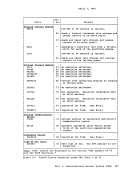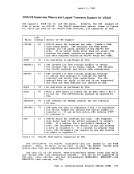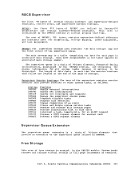is
code.
specifies
termination routine,
reside in the nucleus should use
generate
routines should specify
direct branch to
If a
abend flag and store an abend code in
constant area). After the
abend condition is recognized,. The
abend message, DMSABN148T, with the abend cede stored in
of
you can enter the
1. Issue the
using all the
environment. Then, either issue the
to resume processing at the point the abend occurred.
2. Issue a
The abend recovery function performs the follcwing:
areas are released.
2.
and to update the .aster file directory.
3. If the
4. All link blocks allocated by
5. All FCB pointers are set to zero.
6. All user storage is released.
7. The amount of system free storage
that is actually allocated.
8. The console input stack is purged.
be
of free storage















































































































































































































































































































































































































































